Measuring a lug pattern is an important skill to have as a car owner or mechanic. It allows you to determine the size and type of wheels your vehicle requires, which helps when purchasing new tires or rims. Not knowing to measure a lug pattern can result in incorrect purchases that do not fit your vehicle properly, leading to potential safety hazards and additional expenses.
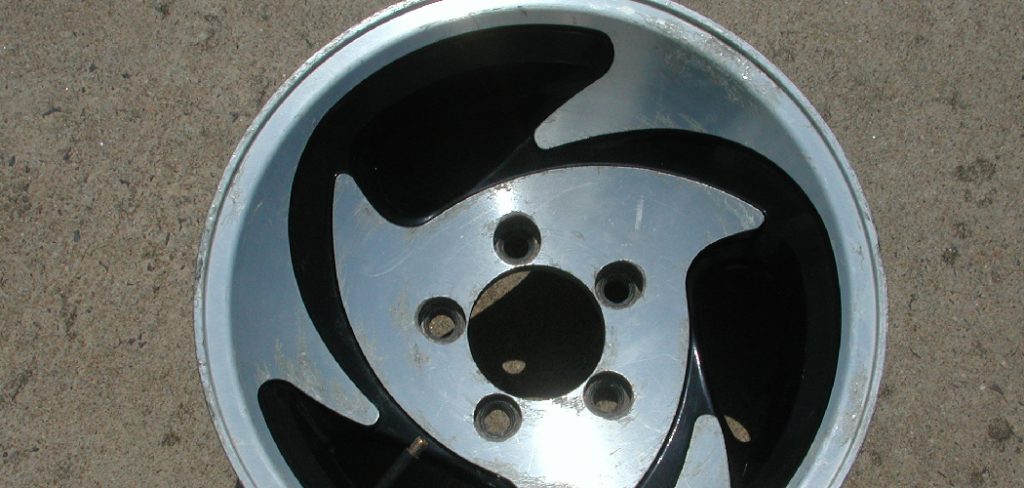
The main advantage of measuring a lug pattern is for vehicle owners and enthusiasts who want to customize their wheels. With this knowledge, they can ensure the best fitment and avoid costly mistakes when ordering new rims or tires.
Additionally, knowing to measure a lug pattern allows for easier comparison shopping and finding the perfect set of wheels for your vehicle. In this blog post, You will learn in detail how to measure a lug pattern.
Step-by-step Instructions for How to Measure a Lug Pattern
Step 1: Inspect Your Wheels
Before you can begin the process of measuring your lug pattern, it is important to first thoroughly inspect your wheels. Look for any signs of damage or corrosion that may affect the accuracy of your measurements.
Step 2: Gather Necessary Tools
To properly measure a lug pattern, you will need a few key tools:
- A tape measure or ruler
- A flat surface to work on
- A pen or marker for marking measurements
Step 3: Measure the distance between lug holes
Place your wheel on a flat surface and use your tape measure or ruler to measure the distance between two adjacent lug holes. Make sure to measure from the center of one hole to the center of the other.
Step 4: Determine Number of Lug Holes
Count the number of holes on your wheel. Most wheels have either 4, 5, or 6 lug holes. Using the measurements from step 3 and the number of lug holes from step 4, you can calculate the bolt pattern diameter by dividing the distance between two adjacent lug holes by the total number of lug holes.
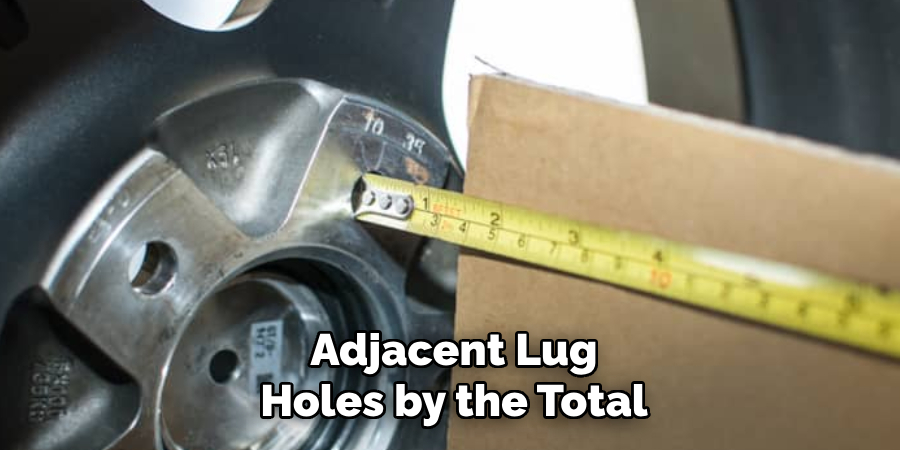
Step 5: Measure Center Bore
The center bore is the hole in the middle of your wheel where the axle hub fits. Use a caliper or ruler to measure the diameter of this hole. To determine the bolt pattern pitch circle diameter, multiply the bolt pattern diameter from step 5 by 0.866. This will give you the distance between the center of one bolt hole to the center of another bolt hole opposite it.
Step 6: Check for Wheel Compatibility
Make sure to compare your measurements to the specifications recommended by your vehicle manufacturer before purchasing new wheels or tires. If your measurements do not match, it is likely that the wheels or tires will not fit properly on your vehicle.
Step 7: Mark and Record Measurements
Using a pen or marker, mark the center of each lug hole on your wheel and record all of your measurements for future reference. Once you have completed measuring one wheel, repeat the process for all other wheels on your vehicle. It is important to measure all wheels individually as they may have slight variations in their lug patterns.
Continue to take care when inspecting your wheels, as any damage or corrosion can greatly affect the accuracy of your measurements. It is also important to ensure that you are working on a flat surface to get the most precise measurements possible.
Safety Precautions for How to Measure a Lug Pattern
- Ensure that the vehicle is parked on a flat surface and the transmission is in park (for automatic) or neutral (for manual).
- Make sure that the wheels are chocked to prevent any movement.
- Always wear protective gear including safety glasses, gloves, and closed-toe shoes.
- Use tools that are specifically designed for measuring lug patterns such as a lug pattern gauge or caliper.
- Double check the measurements to ensure accuracy.
- Keep the lug nuts tight while measuring to avoid any accidents or injuries.
- If possible, have a partner assist you with the measurement for better safety and accuracy.
By following these safety precautions, you can ensure a safe and accurate process of measuring your lug pattern. Remember to always prioritize your safety when working on any vehicle maintenance or repair task.
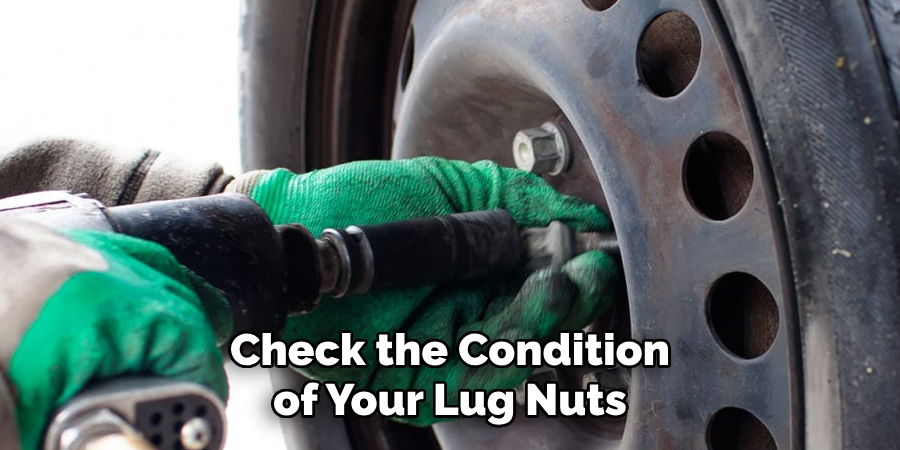
Additionally, it is important to regularly check the condition of your lug nuts and replace them if necessary to avoid any potential hazards while driving.
Are There Any Common Mistakes People Make When Measuring a Lug Pattern and How Can You Avoid Them?
Some common mistakes people make when measuring a lug pattern include:
- Not Using the Correct Tools: The most accurate way to measure a lug pattern is by using a bolt pattern gauge. However, some people use rulers or tape measures which can lead to incorrect measurements.
- Measuring the Wrong Number of Holes: Lug patterns are measured in terms of the number of studs or holes on the wheel. Some people make the mistake of counting the lug nuts instead, which can result in an incorrect measurement.
- Not Taking Into Account Different Bolt Patterns: It is important to note that there are various bolt patterns used for different vehicles. Using the wrong bolt pattern gauge or not knowing about different types of bolt patterns can lead to a wrong measurement.
- Measuring the Center to Center Distance Incorrectly: When using a bolt pattern gauge, make sure to measure from the center of one hole to the center of the opposite hole. Measuring from edge to edge can result in an inaccurate measurement.
- Not Checking for Flange-to-flange Diameter: Some people only measure the diameter of the outer edge of the wheel and not the inner flange-to-flange diameter. This can lead to a wrong measurement and result in purchasing the wrong size of wheels.
- Not Considering Hub Centering Rings: Hub centric rings are used to ensure proper centering of the wheel on the vehicle’s hub. Some people forget to take this into account when measuring a lug pattern, which can lead to incorrect fitment.

To avoid these mistakes, it is important to use the correct tools and follow instructions carefully when measuring a lug pattern. It is also helpful to do some research on different types of bolt patterns and their corresponding vehicles.
How Often Should You Measure Your Lug Pattern and Are There Any Warning Signs That It May Need to Be Re-measured?
It is recommended to measure your lug pattern whenever you are changing or upgrading your wheels. This ensures that the new wheels will fit properly on your vehicle and avoid any potential issues down the road. It is also a good idea to measure your lug pattern if you have recently had any work done on your wheels or suspension system, as this could affect the measurement.
As for warning signs that your lug pattern may need to be re-measured, there are a few things to look out for. If you notice any unusual vibrations or shaking while driving, it could be a sign that your wheels are not properly aligned due to an incorrect lug pattern measurement.
Additionally, if you experience difficulty installing new wheels or have trouble removing old ones, this could also be an indicator that your lug pattern may need to be re-measured.
By regularly measuring your lug pattern and being aware of any warning signs, you can ensure the proper fitment of your wheels and avoid potential safety hazards on the road.
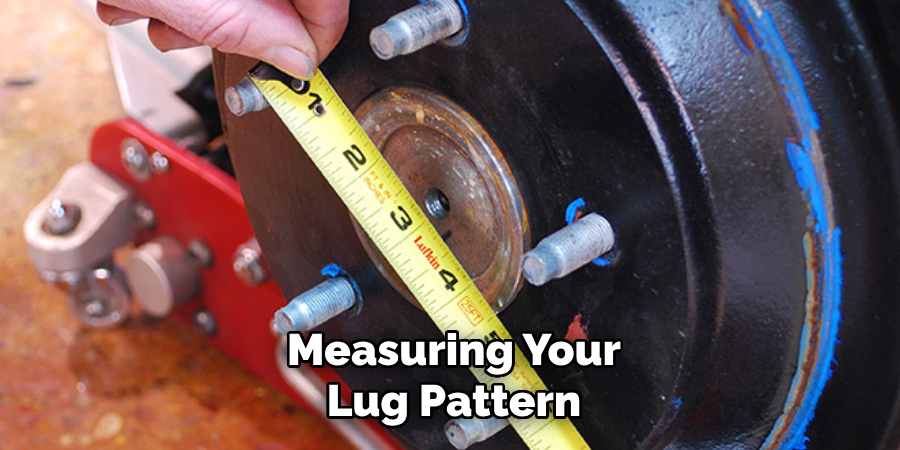
It is always better to double check and accurately measure your lug pattern rather than risk damaging your vehicle or encountering problems while driving. Overall, proper measurement and maintenance of your lug pattern is crucial for the safety and performance of your vehicle.
Are There Any Specific Techniques or Tips for Measuring a Lug Pattern on Larger or Heavier Vehicles?
There are a few specific techniques and tips that can help you accurately measure the lug pattern on larger or heavier vehicles. These include:
- Use a Measuring Tool Specifically Designed for Lug Patterns: There are tools available that are specifically designed to measure lug patterns on larger or heavier vehicles, such as trucks or SUVs. These tools often have longer arms or adjustable features to accommodate the larger size of the lug pattern.
- Use a Template or Guide: Some manufacturers offer templates or guides that can be placed over the lug pattern to help you measure it accurately. These templates are often included with the vehicle or can be purchased separately.
- Take Multiple Measurements: To ensure accuracy, it’s important to take multiple measurements from different points on the lug pattern. This will help you identify any irregularities or inconsistencies in the pattern.
- Clean the Wheel Before Measuring: Make sure to thoroughly clean the wheel and lug nuts before taking measurements. Dirt, debris, or rust can affect the accuracy of your measurements.
- Use a Magnifying Glass: For smaller or more intricate lug patterns, using a magnifying glass can help you see the pattern more clearly and make more precise measurements.
- Be Mindful of Stud Pattern: Some vehicles have a different number of studs compared to the number of lug nuts. This can affect how you measure the lug pattern, so be sure to take stud pattern into consideration.
- Practice and Double-check Your Measurements: As with any measurement, it’s important to practice and double-check your findings to ensure accuracy. It may also be helpful to compare your measurements with those of a professional or reference guide.
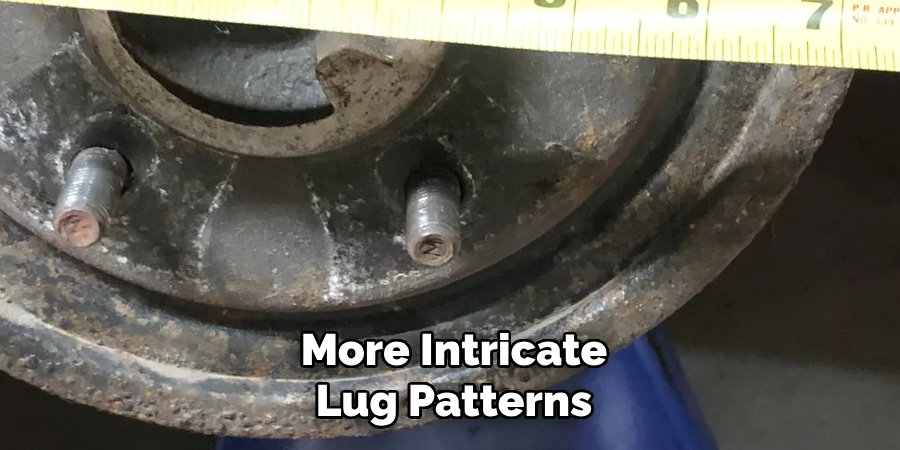
In addition to these techniques and tips, it’s important to familiarize yourself with the specific lug pattern measurement guidelines for the make and model of the vehicle you are working on. Each manufacturer may have slightly different specifications for their lug patterns, so be sure to consult their guidelines before measuring.
Conclusion
In conclusion, measuring a lug pattern can be quite simple once you understand the process and have the right tools. It is an important step to take when purchasing new wheels or tires for your vehicle, as it ensures that they will fit properly and function efficiently.
One of the key things to remember is to always use a lug pattern tool or gauge to accurately measure the bolt pattern. This will give you the most precise measurements and reduce the risk of errors.
Furthermore, it is essential to know the different types of lug patterns and their corresponding number of bolts. This will help you identify which pattern your vehicle has and make sure that you are purchasing the correct size and type of wheels or tires. I hope this article has been beneficial for learning how to measure a lug pattern. Make Sure the precautionary measures are followed chronologically.

About
JeepFixes Team is a skilled author for Jeep Fixes, bringing 6 years of expertise in crafting a wide range of jeep fixes. With a strong background in jeep fixes work, JeepFixes Team’s knowledge spans various types of fixtures, from decorative pieces to functional hardware, blending precision with creativity. His passion for jeep fixes and design has made him a trusted resource in the industry.
Professional Focus:
Expert in Jeep Fixes : JeepFixes Team aesthetic specializes in creating durable and innovative jeep fixes, offering both appeal and functionality. His work reflects a deep understanding of jeep fixes techniques and materials.
Sustainability Advocate : He is dedicated to using sustainable practices, ensuring that every fixture is crafted with eco-friendly methods while maintaining high-quality standards.
In his writing for jeep fixes, JeepFixes Team provides valuable insights into the latest trends, techniques, and practical advice for those passionate about jeep fixes, whether they are professionals or DIY enthusiasts. His focus on combining artistry with engineering helps others discover the true potential of jeep in design.
